When she broke through in the mid-1990s, with her preposterously appropriate surname, Berlin-based Sasha Waltz was all about cheek and chutzpah. Her choreography in pieces such as Twenty to eight and Allee der Kosmonauten was often a satirical take on the local and the everyday. In Körper (“Bodies”) (2000) she delved with physiological and surrealist élan into both the fragility and adaptability of the human form, and through a trilogy of that title laid down her mark as one of the most exciting and wittiest makers of European contemporary dance.
Hands more than bodies attempt some kind of narration of the heart and vulnerability
She has since tackled opera (Purcell’s Dido and Aeneas in 2005, a version of Medea by French composer Pascal Dusapin in 2007), and has now come up with the three-part Continu which has symphonic scope: in an overture, main development and finale, she has created an ambitious piece, made in 2010, which sees her discarding much of her early larkiness, and coming up with something both statelier and more precisely theatrical. It has apparently changed and grown since its première in Zurich, deploying her impessively 23-strong international troupe - not a German among them - with ensemble richness and density.
In part one seven women dance in long dresses, rather sternly, to a percussion solo by Iannis Xenakis, played on stage on a phalanx of drums by Robyn Schulkowsky. The women seem almost to want to be telling stories, circling and stamping around one another furtively, their hands more than their bodies attempting some kind of narration of the heart and of vulnerability. Part two is the centrepiece, musically nearly overwhelmed by a thunderous piece of Varèse abstraction ("Arcana", "Hyperprism", "Ionisation": you get the point). There are great waves of movement, bodies stacking up in corners and against walls. Couples almost form but always fragment. Perhaps the most concrete statement is delightfully offered in a solo by Niannian Zhou, in which she seems to want to sew herself in to a protective cocoon away from all the chaos.
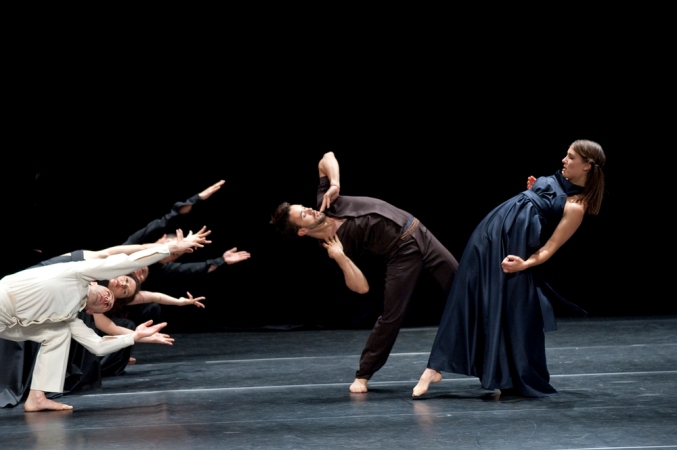 The end of part two, a scene of execution, perhaps provides a clue for what part three is about. Danced to Mozart's Oboe Quartet, it begins with five almost naked men trying to find their place in a brighter afterlife than the first two parts' peunumbral rumblings have suggested was possible. When the rest of the company, in white clothing, joins them, it is as if a soothing ritual is being enacted: tending to the wounded, burying the dead. In a wonderful image towards the end dancers are balanced horizontally across the shoulders of colleagues, their feet walking along the wall as if they are upright. This is a world which has been dissolved of gravity. Waltz's space is for the bodily impossible, a preoccupation which marks all her work.
The end of part two, a scene of execution, perhaps provides a clue for what part three is about. Danced to Mozart's Oboe Quartet, it begins with five almost naked men trying to find their place in a brighter afterlife than the first two parts' peunumbral rumblings have suggested was possible. When the rest of the company, in white clothing, joins them, it is as if a soothing ritual is being enacted: tending to the wounded, burying the dead. In a wonderful image towards the end dancers are balanced horizontally across the shoulders of colleagues, their feet walking along the wall as if they are upright. This is a world which has been dissolved of gravity. Waltz's space is for the bodily impossible, a preoccupation which marks all her work.
This is an assured piece, made up of morphing shapes and sculpture, rarely straight dance. It signals, particularly in the third part, a mature lyricism which Waltz has tended to shy away from. She also, long ago, gave up telling stories and since Körper, which was deeply, compellingly strange, has become less theatrically bonkers, which in some respects is a pity. Part two of Continu, alone the length of The Rite of Spring, has longueurs and empty spots which suggest that some slack and self-imitation have been allowed to enter Waltz's thinking; but she remains an original and dynamic choreographic force. Let's see, when she tackles the real Rite at the Mariinsky next spring, if she becomes tighter and tougher than ever.
Watch excerpts from Continu

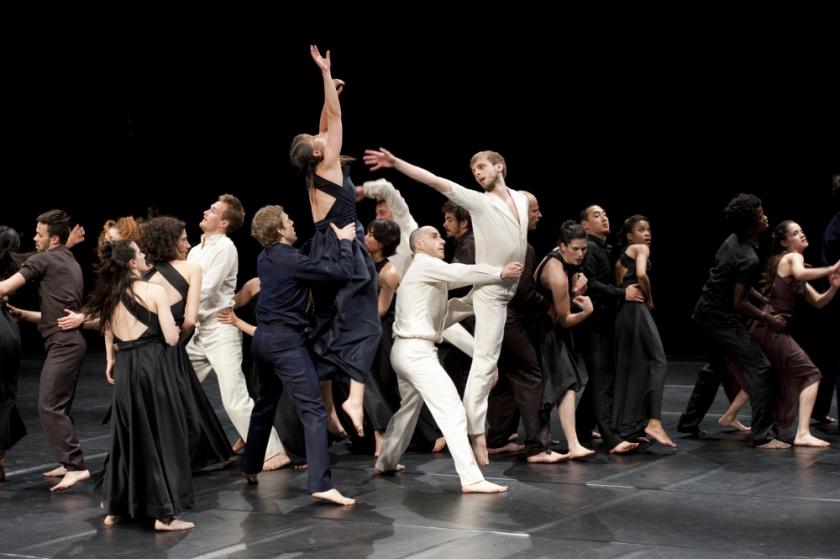

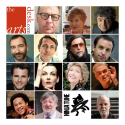
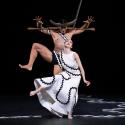








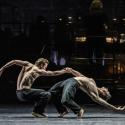
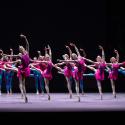
Add comment